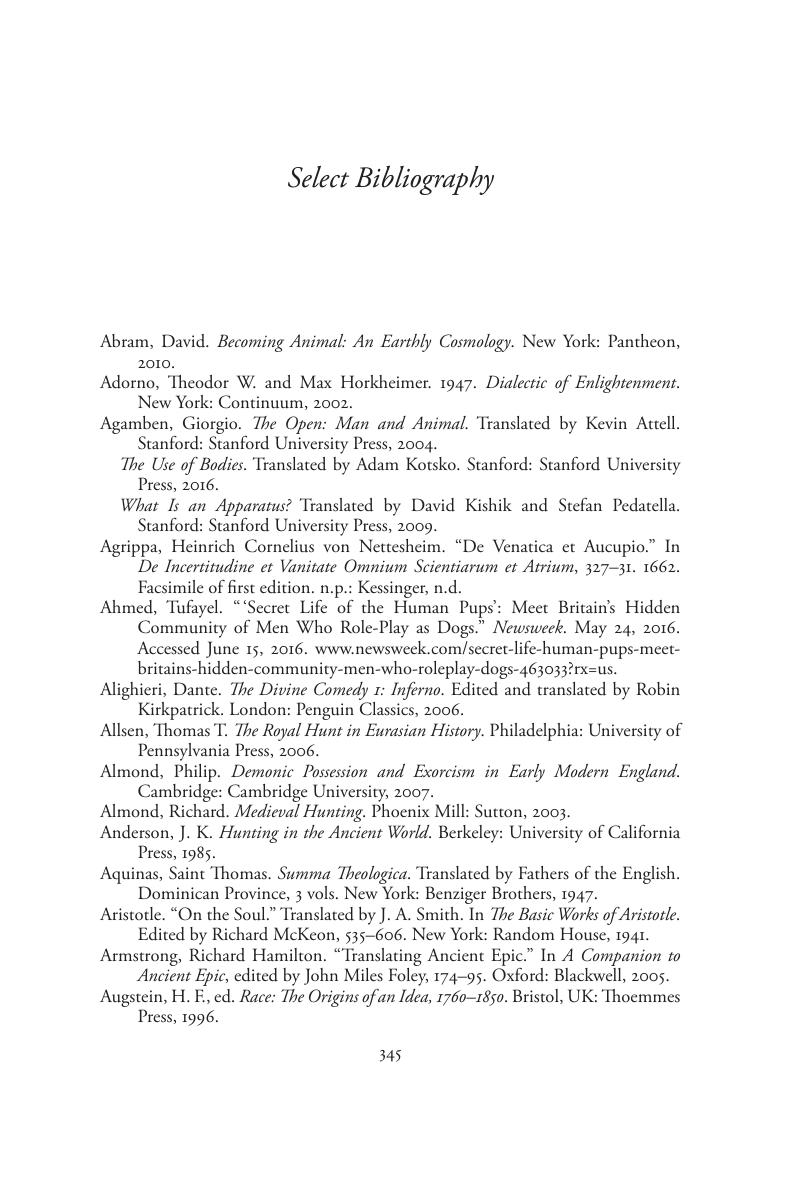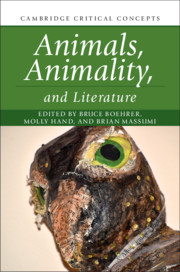Book contents
- Animals, Animality, and Literature
- Cambridge Critical Concepts
- Animals, Animality, and Literature
- Copyright page
- Contents
- Illustrations
- Notes on Contributors
- Acknowledgments
- Introduction
- Part I Origins
- Part II Development
- Part III Contemporary Perspectives
- Afterword
- Select Bibliography
- Index
- References
Select Bibliography
Published online by Cambridge University Press: 14 September 2018
- Animals, Animality, and Literature
- Cambridge Critical Concepts
- Animals, Animality, and Literature
- Copyright page
- Contents
- Illustrations
- Notes on Contributors
- Acknowledgments
- Introduction
- Part I Origins
- Part II Development
- Part III Contemporary Perspectives
- Afterword
- Select Bibliography
- Index
- References
Summary

- Type
- Chapter
- Information
- Animals, Animality, and Literature , pp. 345 - 376Publisher: Cambridge University PressPrint publication year: 2018

